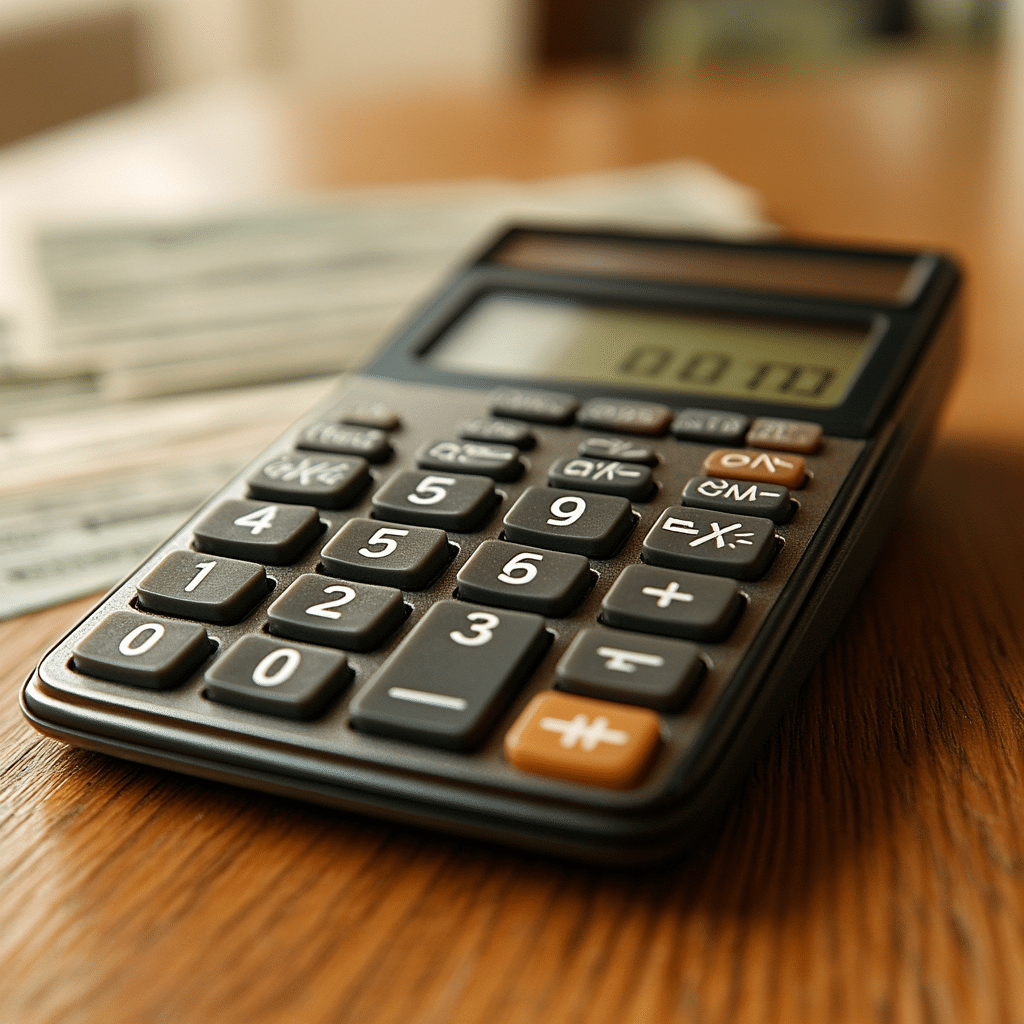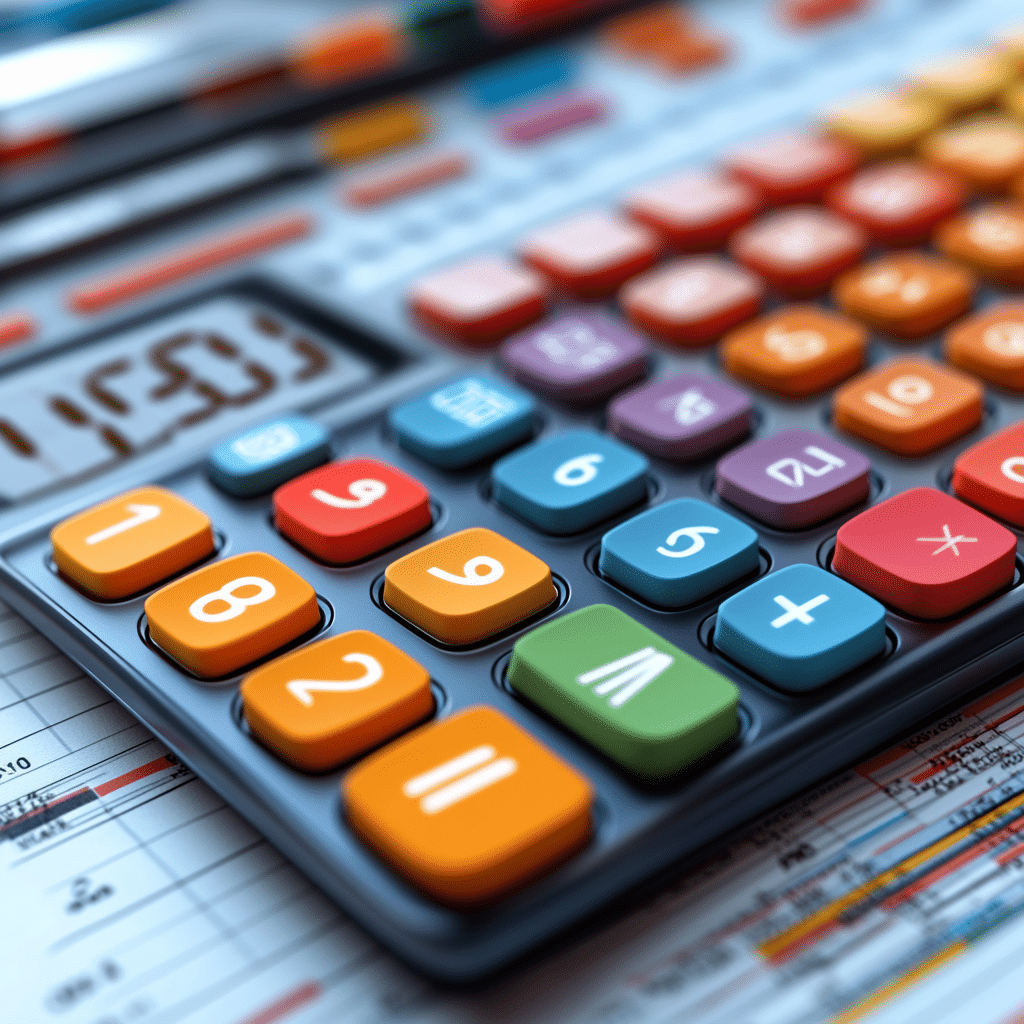Understanding the ROI calculation formula is essential for anyone serious about their investments. As we move into 2024, making sense of these calculations can be your secret weapon in the financial arena. In this detailed guide, we’ll walk you through everything from basic ROI computations to more complex real-world applications. Whether you’re diving into real estate or tech startups, mastering ROI will be your best friend.

How to Calculate Return on Investment: The Basics
The fundamental ROI calculation formula is:
\text{ROI} = \left( \frac{\text{Net Profit}}{\text{Cost of Investment}} \right) \times 100
This formula is straightforward and provides a clear view of your investment’s efficiency. Let’s make this more concrete with an example.
Example: Calculating ROI for a Real Estate Investment
Consider that you purchased a property for $200,000 and sold it five years later for $300,000. You also spent $40,000 on renovations. Your net profit calculation would be:
\text{Net Profit} = \text{Sale Price} – (\text{Purchase Price} + \text{Renovations})
\text{Net Profit} = 300,000 – (200,000 + 40,000) = 60,000
Plugging into the ROI formula:
\text{ROI} = \left( \frac{60,000}{240,000} \right) \times 100 = 25\%
This means your investment yielded a 25% return over five years. Pretty neat, right?

The ROI Equation: Delving Deeper Into the Numbers
Sometimes, the basic ROI equation might not cut it for more complex investments. It’s important to include factors like time frame and opportunity cost for a comprehensive understanding.
Example: Calculating ROI for a Tech Startup Investment
Suppose you invested $50,000 in a tech startup back in 2020, and by 2024, your investment grows to $200,000. The investment duration is four years:
\text{Net Profit} = 200,000 – 50,000 = 150,000
Using the simple ROI formula:
\text{ROI} = \left( \frac{150,000}{50,000} \right) \times 100 = 300\%
For a deeper view, consider the annualized ROI:
\text{Annualized ROI} = \left( \left( \frac{\text{Final Value}}{\text{Initial Value}} \right)^{\frac{1}{\text{Number of Years}}} – 1 \right) \times 100
Plugging in the numbers:
\text{Annualized ROI} = \left( \left( \frac{200,000}{50,000} \right)^{\frac{1}{4}} – 1 \right) \times 100 \approx 63.2\%
| Category | Details |
| Aspect | Details |
| Definition | ROI (Return on Investment) measures the gain or loss generated by an investment relative to its cost. |
| Basic Formula | ROI = (Net Profit / Cost of Investment) x 100 |
| Components | – Net Profit: Revenue from investment minus initial cost and expenses |
| – Cost of Investment: Initial amount of money invested | |
| Extended Formula | ROI = [(Ending Value of Investment – Initial Value of Investment) / Cost of Investment] x 100 |
| Example Calculation | – Initial Investment: $10,000 |
| – Ending Value: $15,000 | |
| – Net Profit: $5,000 | |
| – ROI = ($5,000 / $10,000) x 100 = 50% | |
| Applications | – Business Analysis: Assessing the profitability of ventures |
| – Stock Market: Evaluating returns on stock investments | |
| – Real Estate: Determining the performance of property investments | |
| – Marketing: Measuring the effectiveness of marketing campaigns | |
| Benefits | – Simplicity and ease of calculation |
| – Helps in comparing the efficiency of different investments | |
| – Useful for making informed financial decisions | |
| Limitations | – Does not account for time value of money |
| – May overlook other important factors like risk | |
| – Can be influenced by accounting methods | |
| Tools for Calculation | – Excel and Google Sheets |
| – Financial calculators and ROI-specific software tools | |
| Tips for Accurate Calculation | – Ensure all costs and revenues are accurately tracked and included |
| – Consider all time frames and potential risks to get a realistic estimate | |
| Related Metrics | – CAGR (Compound Annual Growth Rate): Accounts for time and gives annual growth rate |
| – IRR (Internal Rate of Return): Considers the time value of money and yields a percentage representing the profitability of investments |
Practical Applications of ROI Calculation
ROI calculations are not just for big-shot investors. They are critical tools for everyday financial decisions. Let’s explore some scenarios.
Return on Investment Calculation in Marketing
Take a company like Apple. Imagine they spend $5 million on a marketing campaign and earn $20 million in sales. The ROI calculation is:
\text{ROI} = \left( \frac{20,000,000 – 5,000,000}{5,000,000} \right) \times 100 = 300\%
Easy peasy, right?
How to Calculate ROI in Diverse Investment Scenarios
Investments are more than just real estate or stocks. They can be in education, personal skills, and even businesses.
Example: ROI in Education
Suppose you spend $10,000 on an MBA and it boosts your annual salary from $60,000 to $100,000. Your incremental profit calculation is:
\text{Incremental Profit} = 100,000 – 60,000 = 40,000
\text{ROI} = \left( \frac{40,000}{10,000} \right) \times 100 = 400\%
That’s a pretty compelling reason to invest in yourself, don’t you think?
The ROI Formula: Beyond Numbers
ROI is more than just digits; it’s about strategy. Understanding the implications of an ROI calculation can influence your broader financial decisions.
Incorporating Risk into ROI Analysis
Investments carry varying risks. Adjusting ROI to include risk factors gives you a clearer picture. In high-risk environments like cryptocurrencies, consider metrics like the Sharpe Ratio for a comprehensive analysis.
Innovative Wrap-Up
Mastering the ROI calculation formula is crucial for sound financial decision-making. From the basics of ROI to intricate scenarios, applying these principles will drive your successes in 2024 and beyond. Stay updated, refine your calculations, and let these strategies guide you to greater financial heights. Embrace the power of ROI calculation, and let it be your financial compass.
For a deep dive into related topics, feel free to check our articles like Return Of Investment, What Does Roi mean, and expert insights from personalities like Maureen Reagan. Also, if you’re a First Time home buyer in Arizona, understanding ROI could be key to your real estate decision-making.
Mastering ROI Calculation Formula: Fun Trivia and Interesting Facts
Origins and Historical Tidbits
Ever wondered how the ROI calculation formula came to be? Interestingly enough, the concept of calculating returns on investments has its roots traced back to ancient times. While it may not directly relate to Lsu Angel reese, https://www.baltimoreexaminer.com/lsu-angel-reese/, the idea of assessing the value gained versus the cost incurred isn’t far removed from the strategic mindsets that sports stars utilize to measure their performance metrics.
Mathematical Marvels
Now, let’s dive into some mathematical trivia. Did you know that the ROI calculation formula can also be linked to the economic philosophies from the Renaissance era? It might not be as well-known as the quaint village of Henley in Arden, https://www.cwmnews.com/henley-in-arden/, but the practice of tracking investment returns allowed traders and merchants to grow businesses efficiently. This historical application of ROI demonstrates how tracking financial outcomes has always been crucial for economic stability.
Modern-Day Applications
Fast forward to today and the ROI calculation formula has become a staple in various fields, including corporate finance, marketing, and even personal investments. It’s kind of like asking, Is Greg gutfeld married?, https://www.theconservativetoday.com/is-greg-gutfeld-married/: the answer affects public perception and personal strategy. Just as understanding an investment’s ROI impacts decisions in business and beyond, personal insights can shape public engagements significantly.
Understanding and applying the ROI calculation formula involves numbers, sure, but it’s also steeped in decades of strategic financial thinking and historical context. Each investment decision, from ancient markets to modern boardrooms, builds on the principle that knowing your returns can steer you towards (this one instance is okay) more informed and prosperous choices.




